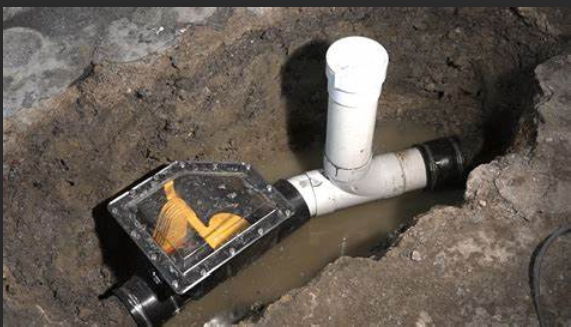
A Backwater Valve is a crucial device you can install on the main line carrying wastewater from your house to the public sewer system is a backwater valve, also known as a backflow valve or sewer backup valve. Its main function is to ensure that water or sewage can only move in one direction – away from your house. This is the way it operates:
Avoids Sewer Backups:
In times of heavy rain or when city sewers are overburdened, water or
sewage may reverse and head towards your house. A backwater valve stops
this kind of sewage backup from happening.
Basement Protection:
When your house has a basement or if the first floor is within 30 cm of
street level, the likelihood of water backup rises. It is imperative to
install a backwater valve in these situations.
How It Functions:
Within the valve, there is a tiny flap that typically remains open,
enabling water to leave your house and sewer fumes to escape. Floatation
devices will cause the flap to close if water or sewage begins to flow
in the opposite direction, stopping anything from entering your house.
Once the flow of water ceases, gravity enables the flap to open again,
facilitating the normal outflow from the house.


A Sump Pump is an essential
tool positioned in the lowest area of a house, usually found in the
basement. Its main purpose is to eliminate gathered water from a basin
designed to collect water. This is the way it operates:
Prevent
basement flooding with a necessary sump pump if your home is in a
flood-prone area. Just a small amount of water can lead to extensive
damage. The pump turns on upon sensing liquid, removing water from your
basement to prevent damage.
Perimeter Drain System: Groundwater
is directed by the sump system into a perimeter drain system that is
placed at the bottom of your house’s foundation. This stops water from
building up and causing possible floods.

